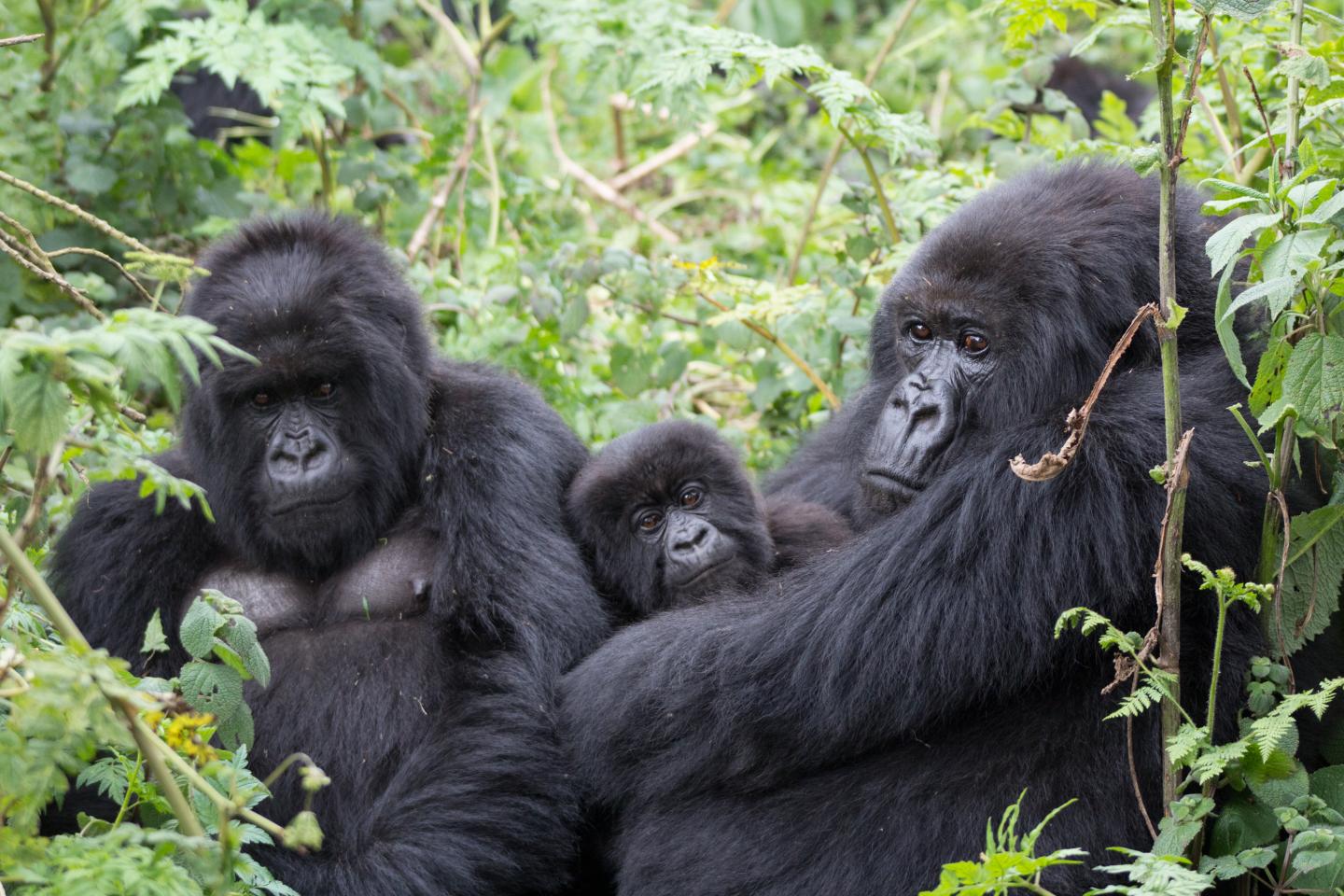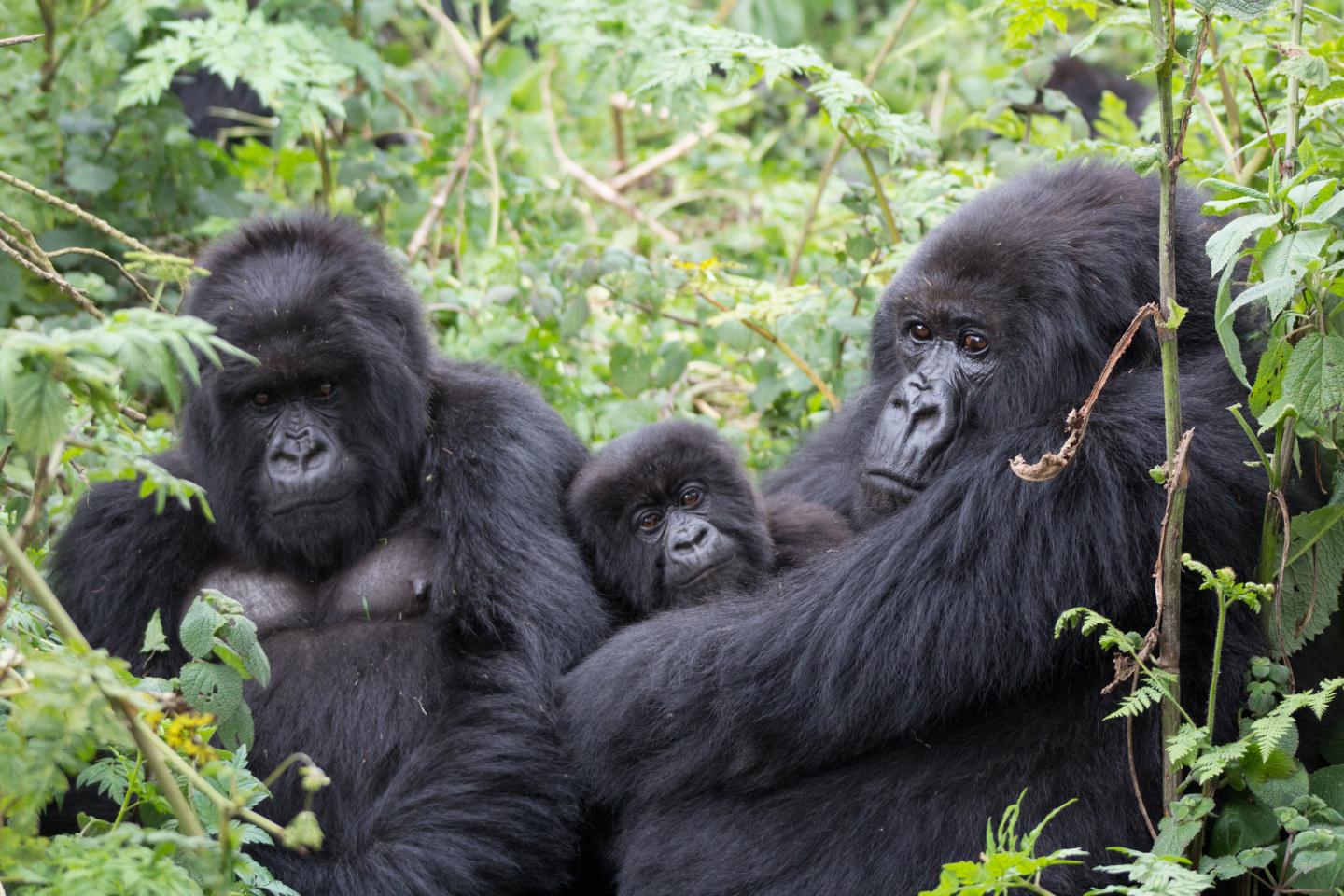
Credit: Tierra Smiley Evans/UC Davis
Chewed bark, leaves and fruit discarded by mountain gorillas provide a simple way to test the endangered apes for viruses without disturbing them, according to scientists from the University of California, Davis, studying mountain gorillas and golden monkeys in East-Central Africa.
The method is described in a study published recently in the American Journal of Primatology. The study is led by UC Davis' One Health Institute and Gorilla Doctors, a program led by the nonprofit Mountain Gorilla Veterinary Project and UC Davis.
"This is the first time that viruses have been detected on plants chewed by primates," said lead author Tierra Smiley Evans, a graduate student at the One Health Institute. "This is a technique people can use without disturbing the primate's natural behaviors."
KEEP IT SIMPLE
Roughly 880 critically endangered mountain gorillas remain in the Virunga Conservation Range, which spans Rwanda, Uganda and the Democratic Republic of Congo, and in the Bwindi Impenetrable Forest in Uganda. Roughly 60 percent of these gorillas are habituated to humans to support ecotourism in the region, putting them at high risk for contacting human pathogens.
Infectious diseases introduced by humans pose one of the greatest threats to survival of great apes in the wild, the study said.
Blood samples, and oral and rectal swabs are often used to detect viruses in primates, but to collect them, primates commonly have to be anesthetized. For the endangered mountain gorillas, anesthesia is only performed when a gorilla is sick or injured due to a human-related cause, not when they are healthy.
Simple, noninvasive sampling methods are needed to monitor the health of the mountain gorillas and other primates, ideally before a virus becomes an outbreak, the authors said.
PICK-UP STICKS
In the study, researchers followed the primates at a distance, collected plant samples chewed and discarded by 383 wild mountain gorillas and 18 golden monkeys, and analyzed them to find viruses shed by mouth.
The method proved effective for detecting both RNA and DNA viruses, which is important because RNA viruses are more likely to be transmitted from humans to wildlife and vice versa.
The new noninvasive method could be used in combination with feces and urine sampling to access the most common routes of viral shedding in wild primates. It can also be used to detect viruses in other wild species where health monitoring is critical for conservation management.
SOMETHING TO CHEW ON
Smiley Evans said that studying the mountain gorillas in their natural environment was "the best part of my Ph.D. experience. I got to go with the parks' advanced tracking teams in the morning and be with the group of gorillas for a few hours before the tourists arrived. I got to observe them, see what they were eating, and collect samples. I was able to recognize individuals after several visits to a group. I wouldn't trade that experience for anything."
Her study builds on previous work she conducted in Nepal and Uganda with primates. In that research, she coated ropes with jam or mango juice, which the monkeys used as "chew toys." Scientists retrieved the ropes to collect saliva samples.
A 'ONE HEALTH' APPROACH
The research is an example of the "one health" approach to public health and wildlife conservation embodied by Gorilla Doctors and the USAID Emerging Pandemic Threats PREDICT project, which is led by UC Davis One Health Institute director Jonna Mazet. PREDICT conducts global surveillance to detect emerging viruses that move among people, wildlife and livestock before such viruses become pandemic. Gorilla Doctors is the PREDICT implementing partner in Rwanda, Uganda and eastern Democratic Republic of Congo.
"We need innovative, noninvasive techniques to sample primates that are simple to deploy in remote settings around the globe for surveillance of pathogens that could also affect people" said UC Davis professor Christine Kreuder Johnson, senior author on this study and director of surveillance for PREDICT.
###
The study's research team included researchers from the Karen C. Drayer Wildlife Health Center and Gorilla Doctors program at UC Davis; the UC Davis California National Primate Research Center; One Health Approach in Conservation in Rwanda; Makerere University Walter Reed Laboratory in Uganda; and the Rwanda Development Board in Rwanda.
In addition to Gorilla Doctors technical support and permissions of the governments of Rwanda and Uganda, the study was funded by a William J. Fulbright Fellowship to Smiley Evans and USAID's Emerging Pandemic Threats PREDICT project.
Media Contact
Tierra Smiley Evans
[email protected]
916-952-0275
@ucdavisnews
http://www.ucdavis.edu





